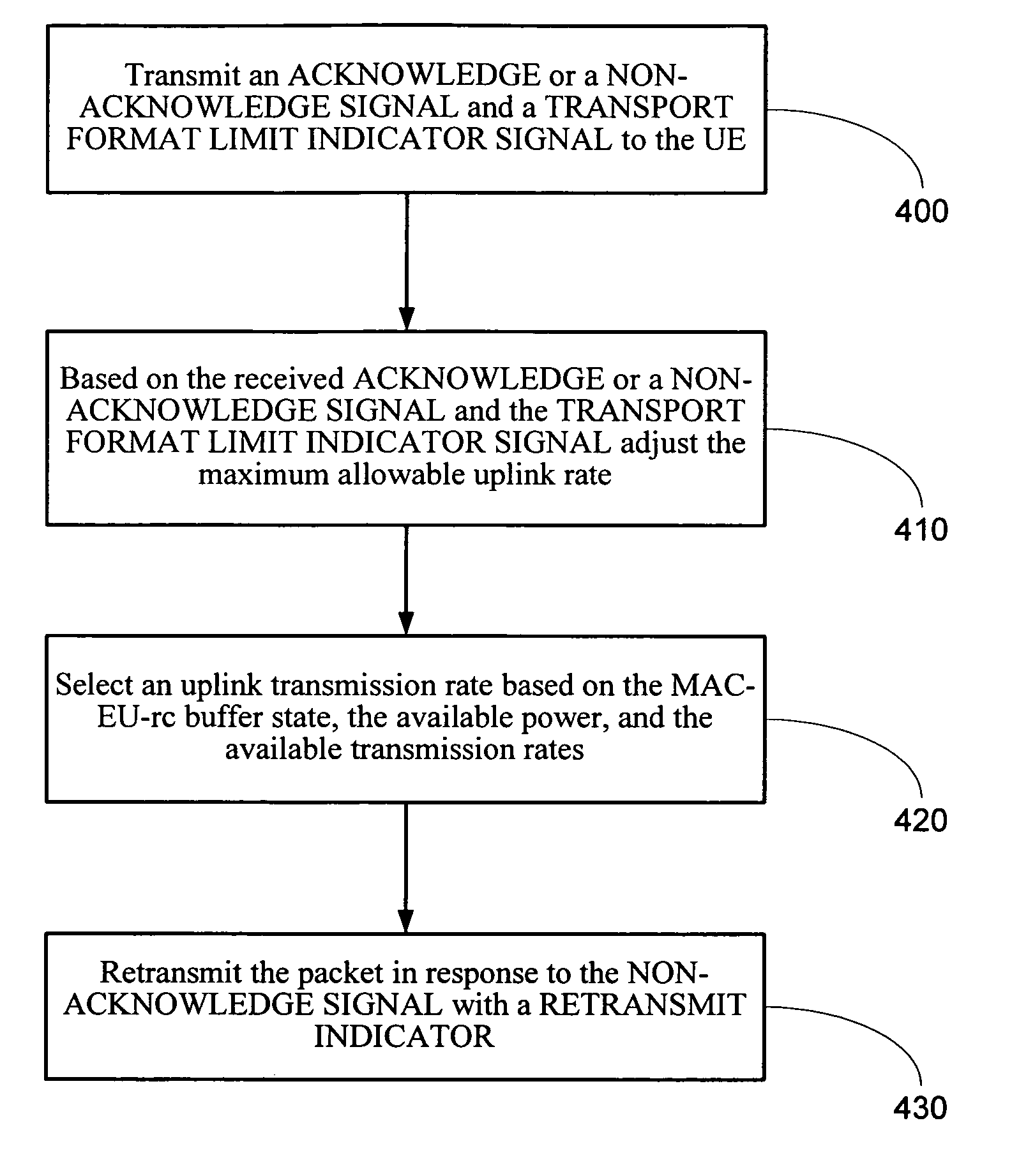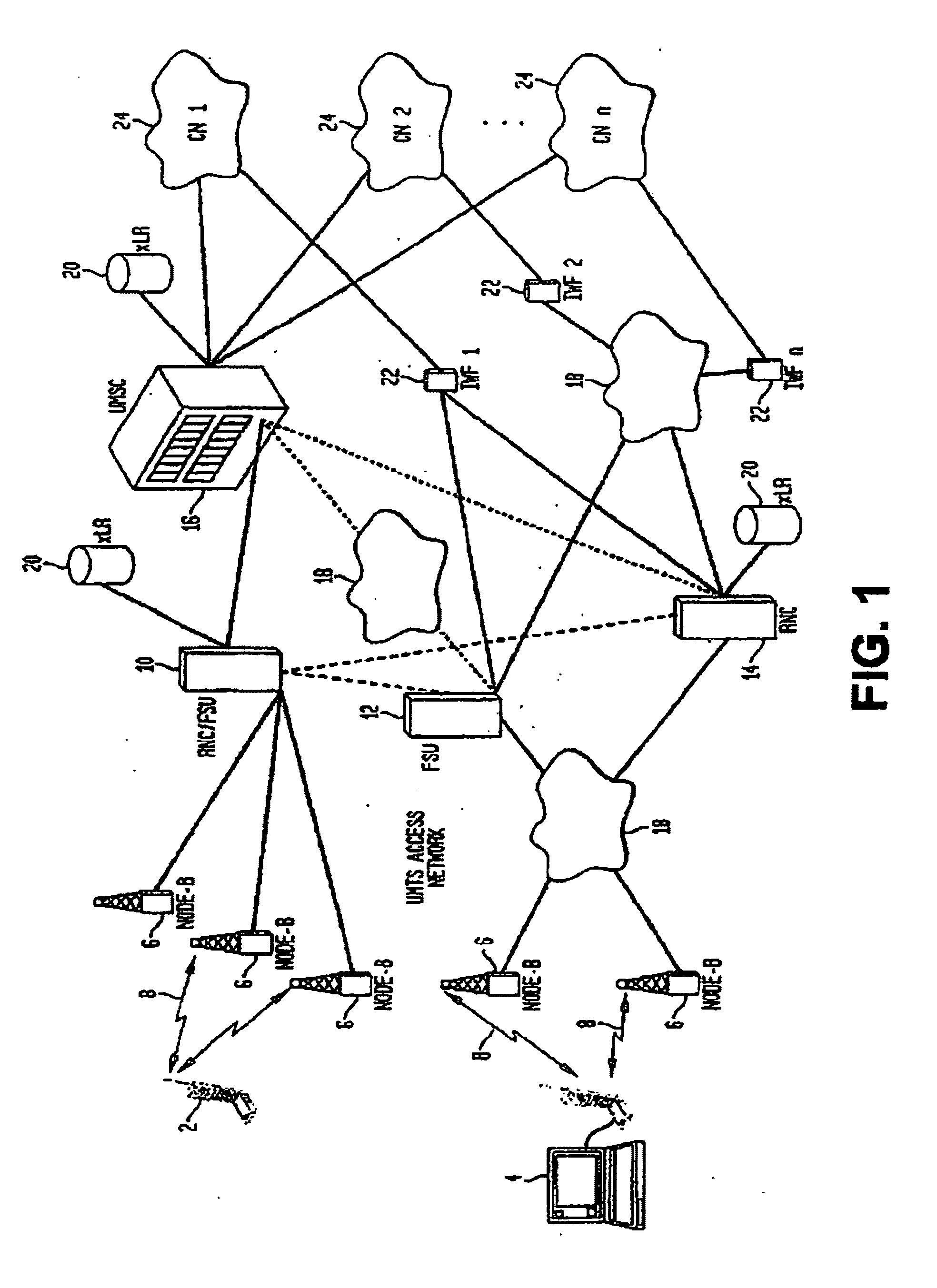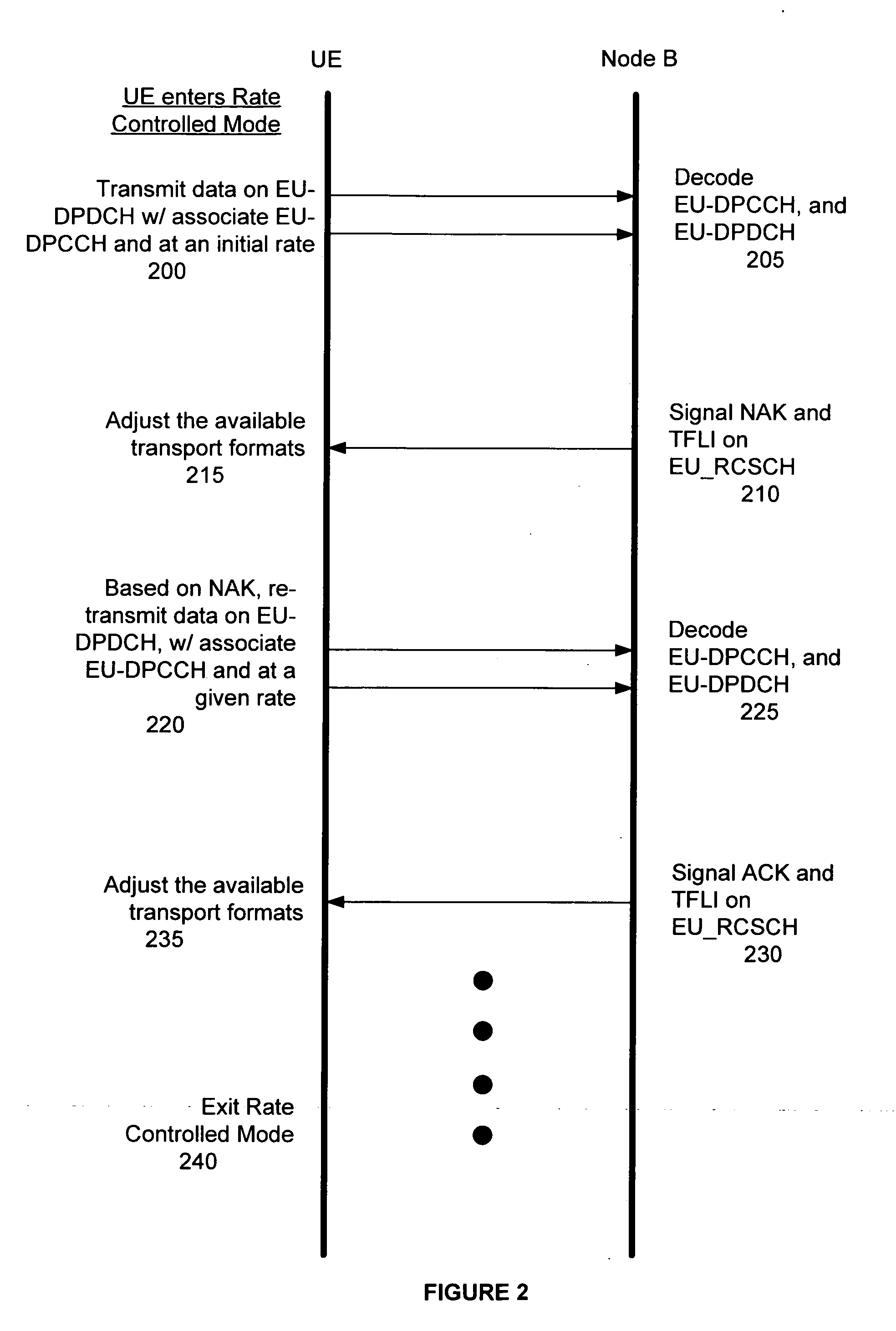Method and system for rate-controlled mode wireless communications
a wireless communication and rate control technology, applied in the field of uplink packet scheduling in wireless communication, can solve the problems of consuming bandwidth, requiring detection of transmission errors, affecting the delivery of subsequently received packets to the higher layers, etc., and achieves a tolerable error rate and flexible and efficient adjustment of uplink data transmission rates.
- Summary
- Abstract
- Description
- Claims
- Application Information
AI Technical Summary
Benefits of technology
Problems solved by technology
Method used
Image
Examples
Embodiment Construction
[0029] The methods and systems described herein may be implemented using software and hardware, individually or as a combination. FIG. 1 is an illustrative block diagram of an UMTS network implementing an embodiment of the invention. A plurality of user equipment (UE) 2 and 4, e.g., mobile terminals, communicate with base stations 6 via CDMA wireless link 8. These base stations communicate with a network component, Radio Network Controller (RNC) 14, that provides radio resources management functions. In UMTS, soft handoffs are supported so that a particular UE does not experience a disruption when one base station hands over communications to another base station. Soft handoffs allow a base station to communicate with two or more base stations 6 with a frame selector unit (FSU) 12, connected to both the base stations, comparing the frames received by two base stations 6 to identify the better frame. This makes it possible for two (or more) base stations to seamlessly support a singl...
PUM
 Login to View More
Login to View More Abstract
Description
Claims
Application Information
 Login to View More
Login to View More - R&D
- Intellectual Property
- Life Sciences
- Materials
- Tech Scout
- Unparalleled Data Quality
- Higher Quality Content
- 60% Fewer Hallucinations
Browse by: Latest US Patents, China's latest patents, Technical Efficacy Thesaurus, Application Domain, Technology Topic, Popular Technical Reports.
© 2025 PatSnap. All rights reserved.Legal|Privacy policy|Modern Slavery Act Transparency Statement|Sitemap|About US| Contact US: help@patsnap.com



